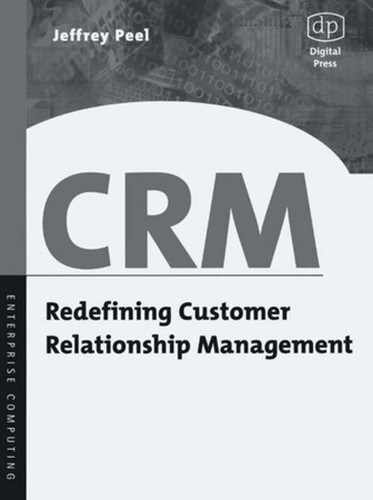
138 9.2 Measurement atthe microlevel
9.2
ments in customer engagement (not just satisfaction) quickly. It's certainly
not only about the Internet, but it recognizes the Internet as a key con-
duitfor application integration and as an increasingly important channel
for asynchronous communications (as well as self-contained e-commerce
communications).
Gartner (one of the more common-sense analysts when it comes to
CRM~it only recently corrected a position of recommending a suite ap-
proach rather than bite-size best-of-breed implementations) has published
data that predict that 50 percent of current CRM implementations will be
considered failures from a customer point ofview in 2006. It's not certain how
that prediction will ever be proved or disproved, but it props up my point. In
Gartner's view, the key weaknesses of those failing CRM implementations
include lack of channel integration, poor process redesign, or just no real tan-
gible customer benefits (this one resulting from the first two, presumably).
The likelihood is that from the implementing company's point of view no
real metrics will be put in place to measure success (or failure) in any case.
Technology-based projects are pretty notorious for being implemented with-
out any formal methods of determining the net result in terms of user
acceptability or customer satisfaction. Of course, the more switched-on
organizations will, no doubt, implement customer satisfaction studies. But for
reasons outlined in the previous chapter, this is not enough.
Measurement at the microlevel
CRM provides real opportunities for customer satisfaction and brand involve-
ment to be measured empirically at a microlevel as well as at the aggregate
level. This allows the net result of CRM initiatives to be measured from
within. To an extent, however, this requires a degree of nettle grasping on the
part of management. There is still a sense of"What I don't know won't do me
any harm," within some management circles. It is this attitude, more than any
other, that spells disaster for CRM. The old maxim applies: nothing is man-
ageable unless it is measurable.
Good old market research can play a key part in determining what the
metrics should be. Qualitative and quantitative research can identify key
brand attributes that contribute to involvement, and there are many proven
techniques for customer satisfaction research and tracking. Building these
metrics into customer databases and committing to a formal process for
continuous customer feedback is extremely important. In this respect the
marketing database and the customer database need to coalesce.
..................Content has been hidden....................
You can't read the all page of ebook, please click here login for view all page.
